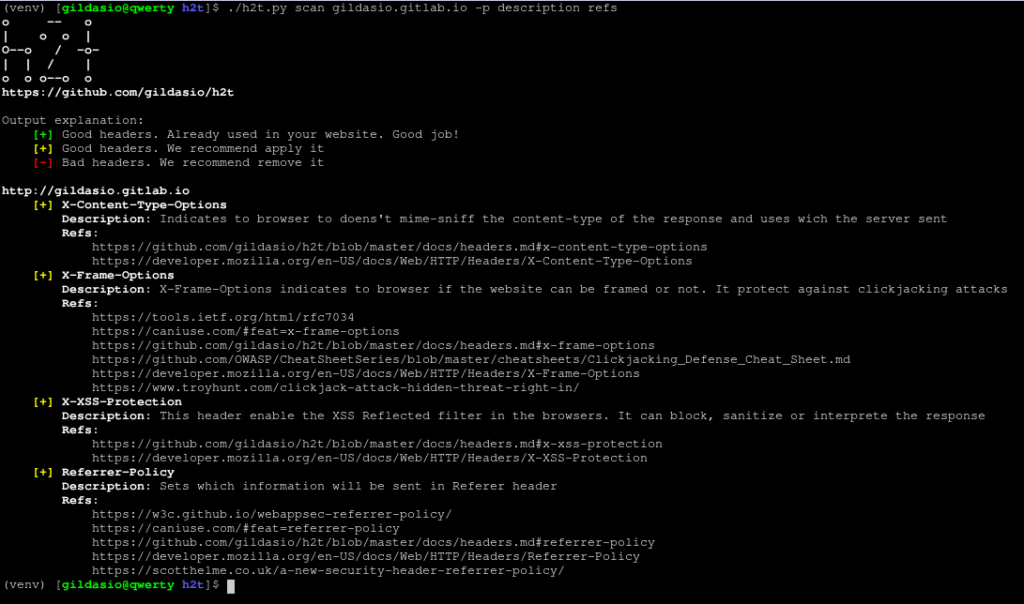H2T is a simple tool to help sysadmins to hardening their websites. Until now h2t checks the website headers and recommends how to make it better.
Dependence
- Python 3
- colorama
- requests
Also Read – Androwarn : Static Code Analyzer for Malicious Android Applications
Install
$ git clone https://github.com/gildasio/h2t
$ cd h2t
$ pip install -r requirements.txt
$ ./h2t.py -h
Usage
h2t has subcommands: list and scan.
$ ./h2t.py -h
usage: h2t.py [-h] {list,l,scan,s} …
h2t – HTTP Hardening Tool
positional arguments:
{list,l,scan,s} sub-command help
list (l) show a list of available headers in h2t catalog (that can
be used in scan subcommand -H option)
scan (s) scan url to hardening headers
optional arguments:
-h, –help show this help message and exit
List Subcommand
The list subcommand lists all headers cataloged in h2t and can show informations about it as a description, links for more information and for how to’s.
$ ./h2t.py list -h
usage: h2t.py list [-h] [-p PRINT [PRINT …]] [-B]
[-a | -H HEADERS [HEADERS …]]
optional arguments:
-h, –help show this help message and exit
-p PRINT [PRINT …], –print PRINT [PRINT …]
a list of additional information about the headers to
print. For now there are two options: description and
refs (you can use either or both)
-B, –no-banner don’t print the h2t banner
-a, –all list all available headers [default]
-H HEADERS [HEADERS …], –headers HEADERS [HEADERS …]
a list of headers to look for in the h2t catalog
Scan Subcommand
The scan subcommand perform a scan in a website looking for their headers.
$ ./h2t.py scan -h
usage: h2t.py scan [-h] [-v] [-a] [-g] [-b] [-H HEADERS [HEADERS …]]
[-p PRINT [PRINT …]]
[-i IGNORE_HEADERS [IGNORE_HEADERS …]] [-B] [-E] [-n]
[-u USER_AGENT] [-r | -s]
url
positional arguments:
url url to look for
optional arguments:
-h, –help show this help message and exit
-v, –verbose increase output verbosity: -v print response headers,
-vv print response and request headers
-a, –all scan all cataloged headers [default]
-g, –good scan good headers only
-b, –bad scan bad headers only
-H HEADERS [HEADERS …], –headers HEADERS [HEADERS …]
scan only these headers (see available in list sub-
command)
-p PRINT [PRINT …], –print PRINT [PRINT …]
a list of additional information about the headers to
print. For now there are two options: description and
refs (you can use either or both)
-i IGNORE_HEADERS [IGNORE_HEADERS …], –ignore-headers IGNORE_HEADERS [IGNORE_HEADERS …]
a list of headers to ignore in the results
-B, –no-banner don’t print the h2t banner
-E, –no-explanation don’t print the h2t output explanation
-o {normal,csv,json}, –output {normal,csv,json}
choose which output format to use (available: normal,
csv, json)
-n, –no-redirect don’t follow http redirects
-u USER_AGENT, –user-agent USER_AGENT
set user agent to scan request
-k, –insecure don’t verify SSL certificate as valid
-r, –recommendation output only recommendations [default]
-s, –status output actual status (eg: existent headers only)
Output
For now the output is only in normal mode. Understant it as follows:
- [+] Red Headers are bad headers that open a breach on your website or maybe show a lots of information. We recommend fix it.
- [+] Yellow Headers are good headers that is not applied on your website. We recommend apply them.
- [-] Green Headers are good headers that is already used in your website. It’s shown when use
-sflag.

- Cookie HTTP Only would be good to be applied
- Cookie over SSL/TLS would be good to be applied
- Server header would be good to be removed
- Referrer-Policy would be good to be applied
- X-Frame-Options is already in use, nothing to do here
- X-XSS-Protection is already in use, nothing to do here
Screenshots
List h2t catalog
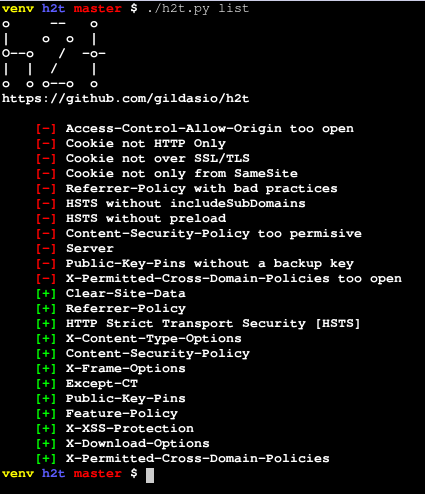
Scan from file
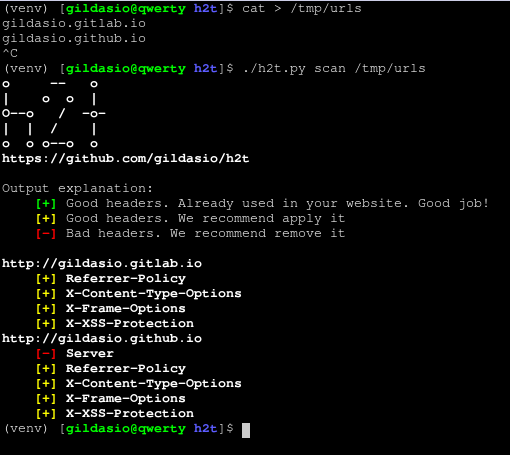
Scan url
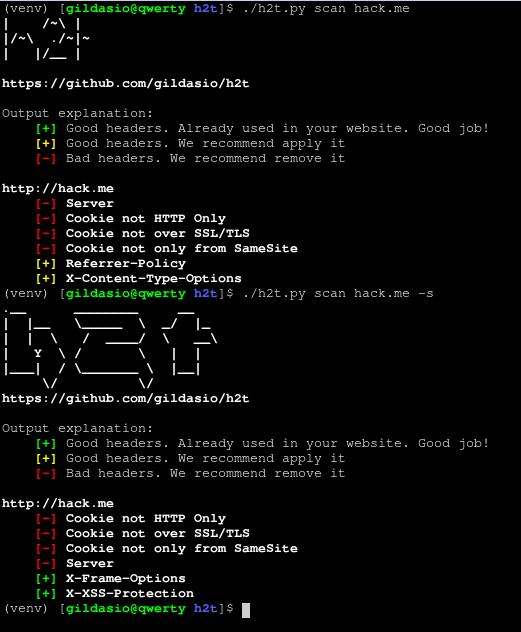
Scan verbose
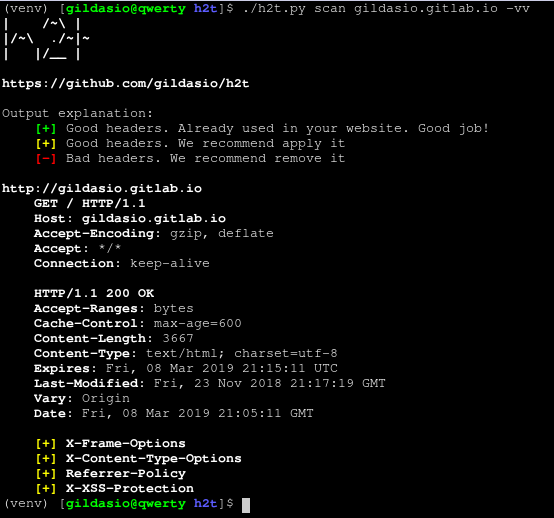
Headers information
